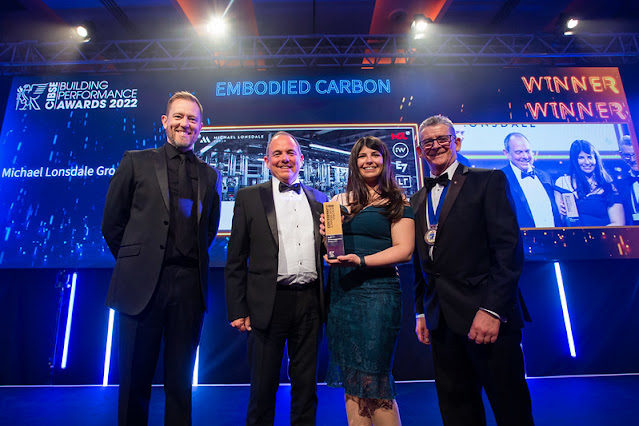Guest blog interview - Bob Bohannon, the CIBSE TM66 LIA trainer
The LIA (Lighting Industry Association) has recently introduced a series of remote training sessions on Creating a circular economy in the lighting industry (TM66). They are divided into two modules, endorsed by CIBSE, and are designed to enhance your understanding and proficiency in utilising CIBSE's TM66 effectively.
Bob Bohannon, the CIBSE TM66 LIA trainer, has shared his experience in teaching, TM66 and his background in lighting.
What you can measure you can manage, TM66 is now enabling all sorts of organisations to either promote their sustainability, to take their first steps, or to demand sustainable products from their suppliers. - Bob Bohannon
Tell us a little about yourself
In terms of sustainability, in a way it’s in my DNA, my mother was in Friends of the Earth in the 1970s, decades before many were aware of the problems we all now see every day. She brought me up with a strong awareness of the importance of the environment and human impacts on it.
When not working, the key focus is my children, Ralph a talented automotive photographer (he thus shares a passion for light with his Dad, but maybe not the same priority for the environment) and Isla as she finishes her A levels and sets out for Uni.
As a trainer, what are you most looking forward to?
BB: Training is utterly pointless unless it results in action. For people to engage with it, it has to be both personally relevant and interesting, Muriel Rukeyser said "the universe is made of stories, not of atoms", I love that quote and she was right, training has to be real for you and ideally interactive and bidirectional.
For me the added ingredients in a good trainer are passion and fun, Kermit the frog was right when he said ‘it’s not easy being green’, sustainability is complex, somehow we need to make it as accessible and thus deliverable as possible.
What is your favourite part about your topic area?
BB: It helps of course that I led the brilliant team that created TM66 and the Circular Economy Assessment Method so I have a huge responsibility to honour the team’s and CIBSE’s work by delivering training that makes TM66 as widely used as possible.
It is great is to hear stories of TM66 being applied, to see it in use. What you can measure you can manage, TM66 is now enabling all sorts of organisations to either promote their sustainability, to take their first steps, or to demand sustainable products from their suppliers. Listening to course participants show us it is working, our industry is increasingly doing the right thing right.
Why do you think that it’s important that building services professionals keep up with their professional development?
BB: We have two influences demanding professional development, firstly the increasing speed and size of change, especially in sustainability and secondly the need under the Building Safety Act for competence. In building services, from designer, through manufacturer to installer – competence and thus professional development should be a given, not an option.
If you could go back to your younger self when you started working in building services, what advice would you give yourself or would you try to change some of the decisions and actions done then?
BB: That’s a really good question. My older self, living in a world where global warming is no longer a theoretical prediction by a fact of daily life, would maybe have questioned how much I flew, or some of the larger architectural floodlighting projects – but as they say, the past is a different place, they did things differently there. In terms of circular economy, dark skies and most other aspects of sustainability (for example using waterless offset printing in catalogues) I hope history will judge me to be consistently ethical.
What would you tell someone who is just about to start or consider working in building services?
BB: Go for it. Modern humans spend much of their life inside buildings, this move indoors has only happened since the industrial revolution, so the last two to three hundred years at most. To quote Dame Judith Hackett ‘we want people to live healthy lives in any building at any time’.
We need to deliver superb indoor environmental quality, including lighting, heating, ventilation and acoustics, in a manner that has the lowest life cycle impact on the environment. That should be challenge enough for any bright new entrant to our industry.
Find out more about TM66 training


.png)

.png)
.png)


Comments
Post a Comment